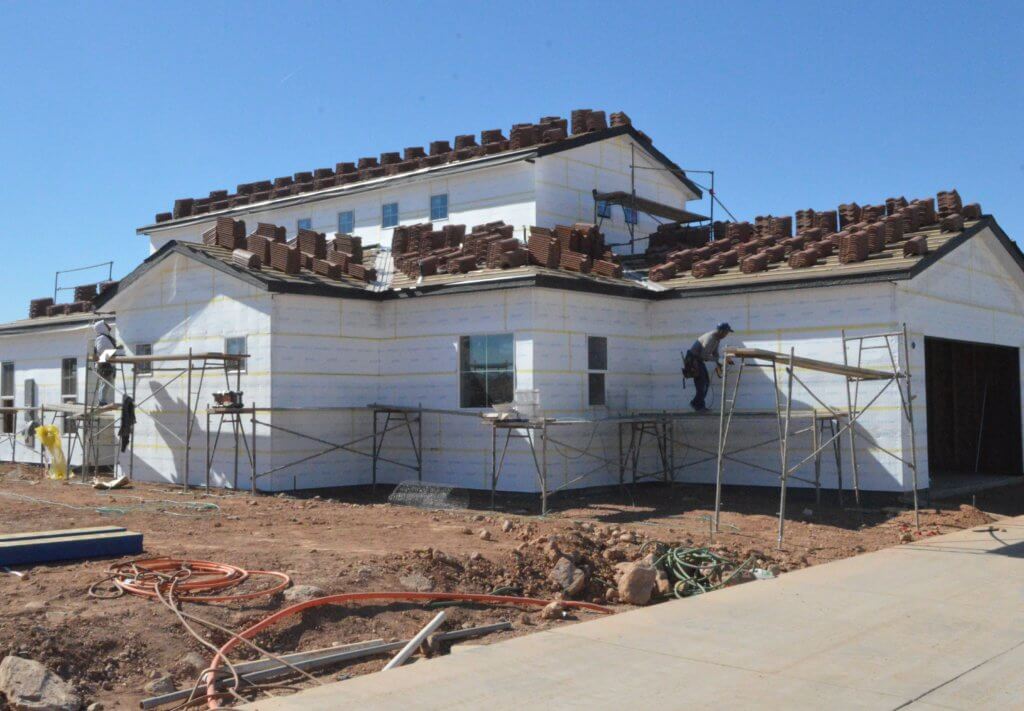Desert Color was featured in an article posted on StGeorgeUtah.com which provides comprehensive and interactive news services focusing on matters of relevance to the communities of Southern Utah.
You can read the full article by David Louis by going here: https://www.stgeorgeutah.com/news/archive/2020/02/18/dld-desert-color-community-to-set-the-bar-high-on-water-friendly-landscaping-design/#.XkxI-S3MzUZ
Commented article is listed below:
ST. GEORGE — Desert Color, a master-planned community just east of Interstate 15 and the Southern Parkway, is the first of its kind in Utah to adopt a water-efficient landscape utilizing a new approach to design.
Being coined as a “localscape” project, when the 3,400-acre development is fully built in about 25 years, the 11,000 potential homes will use 40% less water than traditional Utah developments.
“In our design process when we looked at Desert Color, water is a big deal down here,” said Ryan Coates, project marketing manager. “So we are very sensitive to that concern.”
Coates said the water savings are largely a result of the project’s secondary water storage capabilities.
“All of the builders we have brought into this master-plan community have adopted our goals,” Coates said. “All of the landscaping falls into the localscape endorsement through the Washington County Water Conservancy District.”
Although not a new concept, localscape projects were developed by a team of horticulturists, landscape designers, maintenance pros, irrigation experts and members of the water industry.
According to the Localscapes website, the goal was simple: to create a landscaping approach that takes all the complex science behind landscape design and simplify it to create landscapes that thrive in Utah. The result is five basic pattern pieces that are easy to understand and apply.
These include keeping lawns in a central open shape to allow sprinklers to work more efficiently. Central zones can also be made from other materials such as gravel, pavers, ground cover and any low-lying flat material.
Other design patterns include placing areas such as patios, decks and informal seating outside of lawn areas; locating active zones such as playsets, trampolines and sheds outside of the lawn area; designing pathways that do not require water; and choosing the right plants that are Utah-friendly.
In addition to the concerns of homeowners for individual properties are the concerns for resources shared by all residents of Utah. Localscapes represent a moderate approach to water-wise landscaping that allows people to keep the lawns they love while taking a different approach to appropriate landscapes.
Designing localscapes is not just about water efficiency, it’s about simplifying, Coates said, adding that localscapes incorporate design, installation, irrigation and implementation that is right for Utah.
Coates said they are conscientious of the water needs in Southern Utah.
“We want to be wise stewards of the resources that we have.”
Desert Color project managers hope their approach to water conservation will be a model for other developers.
“We feel that we are at the forefront,” Coates said. “We hope to be the trendsetter in the way that other developers look at their upcoming projects. It can be done.”
For some builders, it may seem like more work, but Coates said with foresight and thought, being water-wise can be achieved.
Desert Color’s general manager Mitch Dansie called it a “benchmark for all new developments.”
“The decision to adopt localscapes principles community-wide was an easy one,” Dansie said. “The city, developer, home builders and other partners share a vision of creating a thoughtful and sustainable community.”
In addition to adopting localscape standards, the developers of Desert Color have installed a metered secondary water system for irrigation purposes.
Zach Renstrom, general manager of the Washington County Water Conservancy District, told St. George News that approximately half of residential water use in desert communities is used to irrigate landscapes.
“Using a secondary water source for irrigation extends the local water supply while reducing costs to the end user,” he said.
Desert Color will have homes priced from under $300,000 to some close to $1 million.
When it is finished, it will include approximately 200 acres for a commercial district that may have a town square with boutique shopping, a mix of big-box stores, dining and entertainment. It will also have health care and schools – essentially, Coates said, “everything for people to have at their fingertips to work here, to live here, to shop here and dine here.”
Coates said they are setting a new standard.
“Are other developers going to follow? We think so. We think we are setting the bar on sustainability.”
